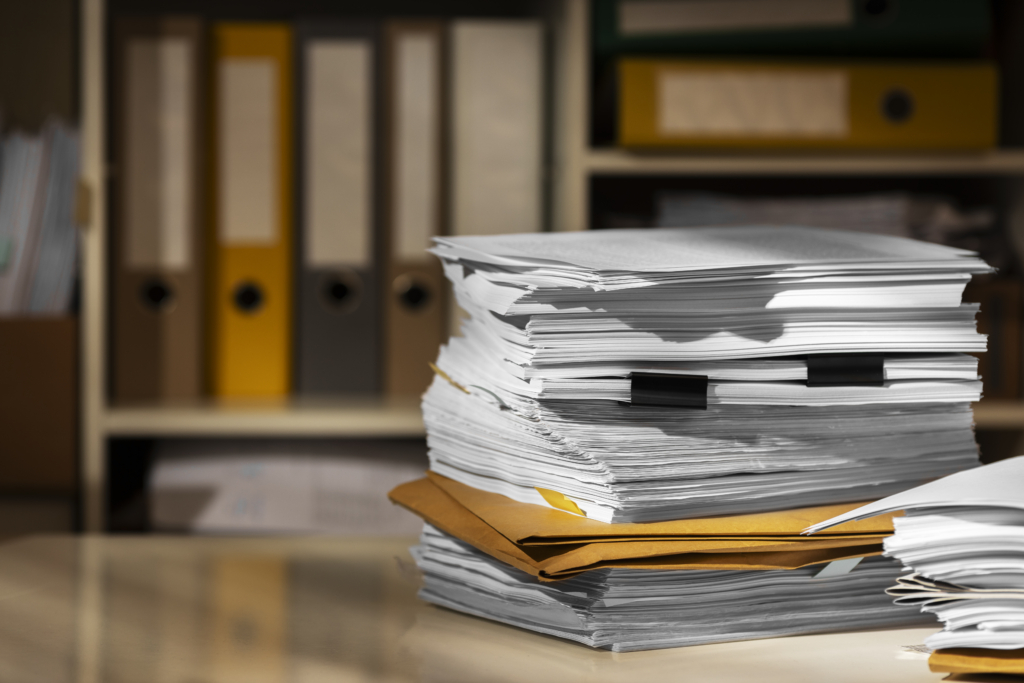- Home
- Learn
- Healthcare
- ABA Notes Examples: How to Document ABA Therapy Effectively
HEALTHCARE
ABA Notes Examples: How to Document ABA Therapy Effectively
Contents
Progress in ABA comes not just from what happens during a session, but also from how well that session is documented.
ABA notes are where data meets decisions. They show what goals were worked on, how the client responded, and what needs to happen next. They also help supervisors support billing and compliance and give everyone from therapists to parents a shared view of the client’s progress.
To make the most out of documentation, the key is writing notes that are clear, clinically useful, and don’t slow down the pace of care.
But what exactly makes a note “good”? What should it include?
And how do you document sessions without spending an hour afterward trying to recall what happened?
This guide breaks it down with real ABA notes examples, common formats, and practical tips. You’ll also see how a specialized healthcare CRM like LeadSquared can help ABA therapy practices simplify documentation and spend less time on admin.
Let’s start with the basics: what ABA notes are, and why they matter.

ABA notes are written records of what happens during a therapy session. They include the goals worked on, the client’s behavior, how the therapist responded, and how the client progressed.
These notes are typically written by Registered Behavior Technicians (RBTs), supervised by Board Certified Behavior Analysts (BCBAs). Together, they form the core documentation used to track a client’s progress over time and ensure that the therapy plan is being followed correctly.
ABA notes serve several key purposes:
Good ABA notes are specific, objective, and easy for another therapist or supervisor to understand. They don’t just say “client did well” but spell out what happened and what to do next.
Many organizations now use digital platforms to standardize how notes are recorded and shared across therapy teams. This reduces errors, saves time, and ensures that all documentation stays consistent and secure.
Here are some of the note-taking approaches you can employ:
This is one of the most structured and widely used formats, especially in healthcare settings.
Subjective
What the client or caregiver reports. This can include moods, energy levels, or challenges they’ve noticed.
Objective
What the therapist observes directly. This includes measurable behaviors, session data, or anything recorded in real time.
Assessment
The therapist’s clinical impression of how the session went or how the client responded to interventions.
Plan
What to do next. This could be a continuation of the current approach or an adjustment in strategies or goals.
SOAP notes are ideal when documentation needs to be formal, consistent, and easy to review across sessions.
This format is more flexible. It focuses on capturing what happened in the session in a narrative or bullet-point style.
Therapists typically write:
Narrative notes work well in fast-paced settings or when the goal is to provide context, not just numbers.
Some ABA teams use a combination of both, adding structure where it helps, and narrative detail where it’s needed.
For example:
Hybrid formats are especially useful when multiple stakeholders (parents, funders, supervisors) are reviewing notes for different reasons.
Platforms like LeadSquared support custom templates, allowing therapists to document sessions in the format that best fits their clinical style and organizational requirements.
Sometimes, the best way to understand what makes a good ABA note is to see one. Below are three sample notes based on common scenarios, each using a different documentation style. These examples follow best practices for clarity, objectivity, and clinical relevance.
Client: Aiden S.
Date: July 10, 2025
Therapist: RBT, supervised by BCBA
Setting: In-home session
Subjective:
Aiden’s mother shared that the morning routine was difficult. She described that during the transition from playtime to getting dressed, Aiden screamed loudly for about one minute, dropped to the floor, and refused to follow directions.
Objective:
Aiden exhibited three instances of transition-related behavior. Each instance included loud vocalizations (screaming), dropping to the floor, and refusal to follow directions. Episode durations were approximately 2 minutes, 1.5 minutes, and 3 minutes. Redirection and use of a visual schedule were implemented. By the final transition, Aiden followed the therapist’s prompt to move activities within 15 seconds without vocal protest.
Assessment:
Tantrum behavior decreased in intensity compared to previous sessions. Aiden responded well to the use of a first-then board, and countdown timer.
Plan:
Continue use of the visual schedule to support transitions between activities. Introduce a token reinforcement system where Aiden earns one token per successful transition (defined as following prompts within 30 seconds without protest). Tokens will be exchanged for a preferred item after three transitions. If high resistance continues (episodes exceeding 2 minutes or refusal lasting longer than 5 minutes), assess whether tasks preceding transitions are too difficult or too lengthy and consider adjusting accordingly.
Client: Maya R.
Date: July 10, 2025
Therapist: RBT, supervised by BCBA
Setting: Clinic-based session
Session Summary:
Maya worked on two skill acquisition programs: receptive labeling (body parts) and independent dressing. For receptive labeling, she correctly identified body parts in 8 out of 10 trials with minimal verbal prompts. For dressing, she independently pulled on her socks and T-shirt with 70% accuracy.
Minimal maladaptive behaviors observed. Maya appeared motivated and engaged. Breaks and token reinforcement were used throughout. The therapist used errorless learning and prompt fading techniques.
Next Steps:
Increase the number of trials for receptive labeling and begin generalization across different settings. For dressing, continue prompting with a plan to reduce assistance over the next two weeks.
Client: Leo T.
Date: July 10, 2025
Therapist: RBT, supervised by BCBA
Setting: School-based session
Antecedent:
Teacher asked Leo to clean up the sensory table and transition to group activity.
Behavior:
Leo threw toys, shouted “no,” and laid on the floor for approximately 90 seconds.
Consequence:
Therapist waited another 10 seconds, then used a visual prompt and offered a preferred item as a transition tool. Leo stood up and joined the group activity after redirection.
Notes:
This behavior has occurred in similar contexts over the past week. Transitioning away from preferred activities remains a trigger. Therapist to collaborate with BCBA to adjust transition plan and identify proactive supports.
These examples show how ABA notes can be adapted based on goals, setting, and note-taking style. No matter the format, what matters most is clarity, consistency, and objective detail that supports clinical decisions.

Good ABA notes reflect professionalism and aids clinical decisions.
Here are the best practices to follow when writing ABA notes:
Avoid personal opinions or vague phrases. Instead, focus on what was observed and measured. Use specific data: number of prompts used, duration of behaviors, percentage of correct responses.
Example:
Wrong: “Client was being difficult today.”
Right: “Client engaged in vocal scripting for 1.5 minutes following a denied request.”
Write in a way that any other therapist, supervisor, or insurance reviewer can quickly understand. Avoid long paragraphs. Use bullet points or short, direct sentences when possible.
Notes should be written the same day, while the session details are still fresh. Delays increase the chance of missed information and reduce the accuracy of clinical records.
Ensure all notes are stored securely and only accessible to authorized users according to HIPAA standards. Avoid including sensitive personal details that aren’t clinically relevant. Stick to your organization’s documentation protocols.
This helps maintain clarity across teams. Whether it’s prompting levels or behavior descriptors (elopement, tantrum, noncompliance), consistent language makes collaboration smoother and documentation more readable.
With LeadSquared, therapy teams can standardize note-taking formats across providers, set up compliance alerts, and link notes directly to client profiles.
Writing an ABA session note doesn’t have to feel overwhelming. Follow this simple sequence to make your documentation more efficient, consistent, and clinically useful.
Include the client’s full name, session date and time, location (home, school, clinic), and your name (therapist) or ID. This makes sure the note is properly linked to the right session and person.
Decide whether you’re using a SOAP format, narrative note, ABC observation, or a hybrid approach. Follow your organization’s guidelines if a standard format is required.
Document which programs or goals were targeted. Include measurable data — number of trials, accuracy percentages, prompts used, or frequency of behaviors. Be specific and objective.
Describe the behaviors observed, and how you responded. Include details like antecedents, consequences, and the effectiveness of the strategies you used.
Offer a brief clinical impression. Is the client progressing, plateauing, or showing new behaviors? Keep it focused on what was observed and supported by data.
Mention what you or the supervising BCBA will do next — continue a program, modify an intervention, or introduce a new skill. This helps maintain continuity in care.
Check for typos, unclear phrases, or missing information. Make sure all required fields are filled in. Add your digital signature or log your credentials to finalize the note.
Ensure the note is saved in a HIPAA-compliant system and linked correctly to the client’s record. It should be accessible to authorized staff, supervisors, or billing teams as needed.
LeadSquared supports HIPAA-compliant documentation workflows, ensuring your notes are securely stored, linked to the right client record, and easily accessible to supervisors or billing staff. This keeps the process clean and accountable.

Efficient documentation is also about using the right tools to save time and streamline the process.
Many ABA professionals use downloadable templates to speed up notetaking and maintain a consistent structure. Common options include:
These templates can be printed or used digitally to guide documentation during or after each session.
Templates are a good starting point, but managing dozens (or hundreds) of notes each week across multiple clients and staff can get cumbersome.
A digital tool can help here. CRMs built for healthcare, like LeadSquared, or behavioral services, can add structure, automate reminders, and make it easier to work in coordination.
Therapists often spend hours working through programs, behaviors, and goals. But if those sessions aren’t documented in the right way, a lot of that effort risks getting lost in translation.
Good ABA notes do more than satisfy a compliance box. They create continuity across sessions and, most importantly, make sure each client’s progress is clearly understood, week after week.
If you’re part of a growing ABA team, keeping things consistent becomes even more important. That’s where structured formats and the right tools can make a real difference.
Whether you’re writing one session a day or managing notes for a team of therapists, a platform like LeadSquared can help reduce the busywork. With custom templates, automated reminders, and HIPAA-compliant storage, it gives you more time to focus on care.
Curious how it could work for your team? Book a quick demo and see what it looks like in action.
ABA session notes are comprehensive, session-by-session logs that record key clinical information. They include client and provider details, targeted programs, observable behaviors, and intervention responses. These notes translate real-world therapy into actionable insights to help guide treatment adjustments and maintain continuity over time. Providers and stakeholders rely on them for training, auditing, and ensuring care consistency.
Typically, the therapist on the front line—often an RBT—writes the note immediately after the session. Those notes are later reviewed or co-signed by their BCBA supervisor. This creates layers of clinical oversight and accountability. Notes serve as formal records of care delivered, ensuring oversight and clinical rigor.
Insurers use these notes to verify that sessions were provided, medically necessary, and aligned with the treatment plan. Notes document interventions, outcomes, and session duration in detail. Without properly written notes, providers risk claim denials or audits that could jeopardize reimbursement.
Each note should include:
Client identifier, date, time, location
Goals or programs worked on
Data tracking (frequency, duration, prompts)
Objective behavior observations (ABC if used)
Interventions implemented
Clinical impressions or progress assessment
Therapist signature or electronic credential log
These elements ensure legal compliance, billing accuracy, and clinical usability
ABA best practices recommend completing notes within 24 hours of the session, ideally immediately afterward. Prompt documentation preserves accuracy and detail. Inconsistent timelines or delays over 48 hours raise flags during audits and may reduce the clinical value of documentation.
Notes must be strictly objective and devoid of judgments. Use quantifiable terms (“client performed 8/10 tasks independently”) instead of subjective language (“client seemed unmotivated”). Objective documentation aligns with ethical requirements and improves the clarity and reliability of treatment records.
Three formats stand out:
SOAP (Subjective, Objective, Assessment, Plan) provides structure and is reviewer-friendly
Narrative/session notes offer flexibility in fast-paced settings
ABC forms document behavior-specific events in real time
Hybrid models mix structured data with narrative context to meet diverse stakeholder needs.
Yes. Digital notetaking is standard across most ABA practices. Electronic systems enhance legibility, keyword searches, timestamps, and secure storage. They also support HIPAA compliance and audit-readiness, making them more efficient than paper records.
Common pitfalls include subjective language, incomplete data, inconsistent templates, and delayed writing. Use standard templates, maintain consistent terminology, document promptly, and include structured training for staff. These practices support accuracy, compliance, and clinical value.
Digital platforms streamline documentation by auto-populating client and session data, prompting for missing fields, sending alerts when notes are due, and securely linking entries to client records. These features reduce administrative burden, improve consistency, and support billing accuracy—all while freeing clinicians to focus on care.